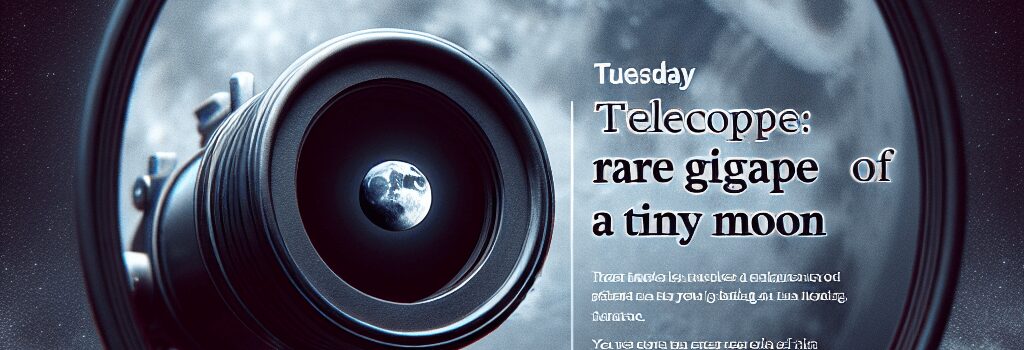Tuesday Telescope: Rare Glimpse of a Tiny Moon

Illuminating the Dark Side of Deimos
Deimos, the smaller of Mars’s two moons, is often overshadowed by its bulkier sibling Phobos. With a mean radius of just 6 km and an average orbital distance of 23 460 km from the Martian surface, Deimos is barely brighter in Mars’s night sky than Venus is from Earth. Yet this diminutive world holds outsized scientific value: its low gravity, primitive regolith, and stable orbit make it both a natural laboratory for small‑body science and a potential staging ground for future Mars surface missions.
The ESA Hera Gravity Assist Flyby
On April 15, 2025, ESA’s Hera spacecraft executed a textbook gravity assist maneuver when it skimmed within 300 km of Deimos at approximately 5.6 km/s. Originally bound for Didymos and its moon Dimorphos to study asteroid deflection, Hera leveraged Mars’s satellite system to fine‑tune its trajectory. During the flyby, Hera’s Asteroid Framing Camera (AFC) captured multi‑filter images of Deimos, later combined and artificially colored to highlight surface features. The AFC employs a 1024×1024 back‑illuminated CCD with a 10° field of view and a 400–700 nm spectral band, delivering <10 m/pixel resolution at closest approach.
Orbital Dynamics and Gravity Assist Mechanics
Hera’s Deimos encounter illustrates advanced mission design principles. By passing behind Mars relative to the Sun, Hera gained ∼200 m/s of delta‑v without expending propellant. Mission planners at ESA and NASA’s Jet Propulsion Laboratory used high‑precision ephemerides and the latest gravity field models (MRO’s GMM3) to calculate perturbations caused by Phobos and the Martian equatorial bulge. This flyby refined Hera’s outbound trajectory toward Didymos, conserving ∼15 kg of hydrazine.
Surface Composition and Regolith Analysis
Pre‑flyby spectral data suggested Deimos is chondritic, with a mix of carbonaceous and silicate materials. Hera’s AFC observations, supplemented by on‑board infrared radiometers, are now being processed to map albedo variations and identify olivine‑rich outcrops. “Understanding Deimos’s regolith structure is key for both science and engineering—its porosity informs landing strategies and potential in‑situ resource utilization,” says Dr. Maria Zuber of MIT’s Department of Earth, Atmospheric and Planetary Sciences.
Future Exploration Prospects: MMX and Sample Return
Japan’s Martian Moons eXploration (MMX) mission, slated for launch in 2024 and arrival in 2026, will follow in Hera’s footsteps, conducting multiple flybys of both Phobos and Deimos before attempting a sample return from Phobos. Hera’s data will help refine MMX’s navigation and sampling system, which must contend with microgravity and loose surface regolith. NASA’s Mars Sample Return campaign may also leverage Deimos as a cache point for Mars surface samples, using aerobraked micro‑landers to shuttle material back to orbiter platforms.
- Image credit: European Space Agency
- Hera Asteroid Framing Camera: 1024×1024 CCD, 10° field of view, 400–700 nm band
- Flyby parameters: 300 km closest approach, ∼5.6 km/s relative speed, ∼200 m/s delta‑v gain
- Upcoming missions: JAXA’s MMX (2026 arrival), NASA Mars Sample Return (2030s planning)